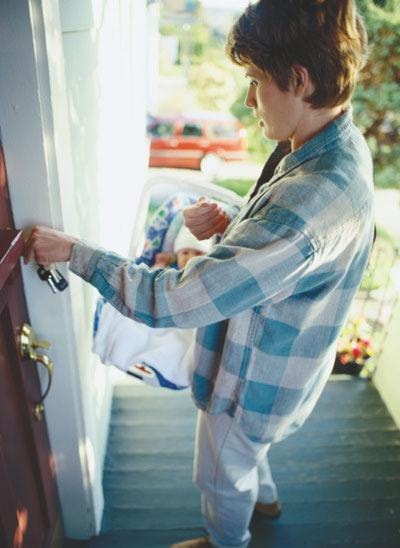Imagine you enter an office, kids and a dog in tow because there hasn’t been money for a sitter for months now. Your partner is at the doctor’s and has been out of work for three months due to an injury. Your family is two months behind on rent — that’s $4,000 for your three-bedroom house in Gordon Head, with another $2,000 coming up on the first. You’ve already borrowed from your parents, then your friends. You’re about to get evicted. “I have kids — I can’t lose my home,” you tell the front desk worker.
Those are some of the extreme cases that the Homeless Prevention Fund has seen since its inception last January. But now, as it rounds its first birthday, the program that was started by the Greater Victoria Coalition to End Homelessness has helped more than 30 families and 80 individuals keep their apartments through the toughest of times, and work on budgeting their finances back into the positive.
“This is a program people love to support because you can see the difference it makes in people’s lives right away,” says Sandra Richardson, CEO of Victoria Foundation, one of the key program partners. “Sometimes it just takes a little hand up to set people on the right path … it’s so much easier to prevent something than have to fix it when it’s gone too far.”
Members of the program know a thing or two about life getting out of hand. The fund started from a benevolent donation of $50,000 last year. When the coalition partnered with Victoria Foundation and 10 other resource and financial groups to challenge residents to match that donation, they more than doubled the amount, and kicked off a fund that would become the lifesaver to so many.
“What we’re seeing here is an increasing trend not so much of people living below the poverty line, but a number of families coming in from the Gordon Head area in extreme debt,” says Suzanne Cole, executive director at Burnside George Community Centre, another partner. “You lose a job, or get an injury, and there’s a thin line between a tight month, a bad month and an eviction notice.”
At the donor’s request, the fund was divided so that 25 per cent of rent subsidies would go towards families in need, while 75 per cent helps individuals. Each person can access the fund one time only, and only after all other governmental and personal resources have been extinguished. The subsidy offers a max of just $500, which means oftentimes “extreme” cases are beyond the fund’s capabilities.
But while the number can seem like too little too late for some, the amount can be applied to housing, damage deposits, or looming hydro bills. And although the name “Homeless Prevention Fund” carries some stigma that may leave many thinking they don’t count for handouts, Cole and others insist that the dynamics of “in-need” have changed a lot in the last few years. Part of the program, she says, involves working one-on-one with families and having those uncomfortable conversations to get real about where they can cut costs.
“People are more likely to talk to you about their marriage than their finances — it’s a very personal thing,” says Cole. “But so many of us do live virtually one paycheque away from being homeless, and so many say ‘I can’t believe I’m here.’ Even if that money just gives them enough time to find a place that’s more affordable, it’s still helping.”
Unfortunately, because the fund is set up on a first-come, first-served basis, budgeted resources do get tapped out most months.
“This is not a solution — this is just one additional resource for clients who have reached rock bottom,” says Debbie Thompson, executive director of the coalition. “November and December have become particularly busy months, where we could have doubled the number of requests we responded to … but we tap every resource we can for clients, and every cent put into this program goes straight into people’s need — this is all volunteer; no one is paid for this work.”
The fund was created with a two-year plan in mind, and has funding enough to continue its work this year. Due to the need, however, Thompson and the others would like to see the program expanded and maintained over the long-haul — but this will require additional funding.
“I have seen that this fund has made the difference between someone losing or keeping their home, which is very humbling,” says Thompson. “And some people do say, thank you, but this is just not enough. And they are right. Others, though, come back and donate to the fund themselves and tell us, ‘this is what got me through — now please do the same for someone else.’” M
